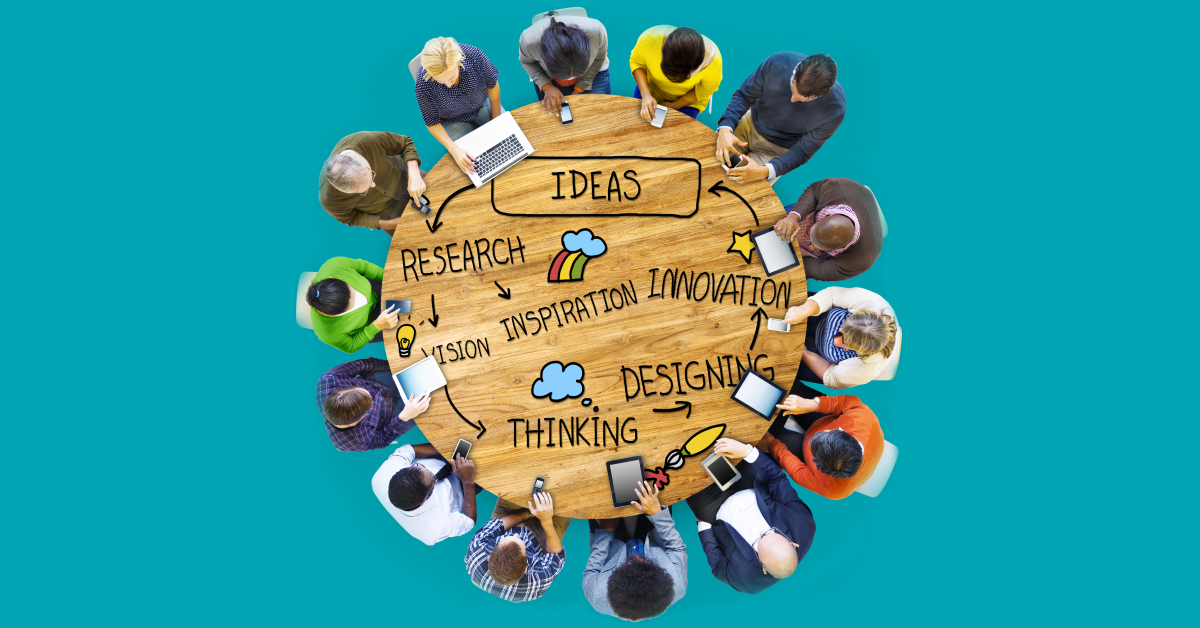Design Thinking – the new TQM of the 21st century
Innovation, its not nice-to-have anymore. It's a given.

Total Quality Management has been systematic, teachable and tool-based; providing structure to new businesses to introduce quality as an organisational strategy. This in turn helps enhance customer satisfaction and problem- solving. However, businesses have realised that quality must be everybody’s job only recently.
As per a research conducted by Darden Business School, most managers have been seeing innovation in a similarly limited way - as the job of the Product Development Department, but now this view is changing where everybody in an organisations is on the lookout for ways to innovate - not just with products but with processes and strategies as well.
The research at Darden demonstrates that Design Thinking can do for innovation what TQM did for quality: introduce a common language and teachable methodology that equips non-designers i.e everybody in an organisation, to learn new ways of thinking and behaving.

What is Design Thinking?
Design Thinking is an iterative process in which we seek to understand the user, challenge assumptions, and redefine problems to identify alternative strategies and solutions that might not be instantly apparent with our initial level of understanding. At the same time, Design Thinking provides a solution-based approach to solving problems. It is a way of thinking and working as well as a collection of hands-on methods. Using Design Thinking to make innovation an organisational capability requires a deep understanding of the people for whom the products or services are being designed. It’s about creating empathy with the target user. You question the problem, the assumption and the implications. When you begin to brainstorm and adopt a hands-on approach across the organisational structure, you open your mind to experimentation and trial with ideas, concepts and testing in human-centric ways. First propagated by Herbert Simon in his path breaking work, The Sciences of the Artificial (1969) and developed by other like-minded thinkers, Design Thinking is now associated with creating innovative solutions in business and social related contexts. Design Thinking is not an isolated concept, it’s a series of steps anchored to achieve an innovative solution. According to the Hasso Plattner Institute of Design, Design Thinking is divided into five phases:
- Empathising with the clients
- Defining the problem
- Ideating
- Building prototypes
- Testing
Regardless of the different ways ascribed by researchers, organisations enjoy the flexibility to implement Design Thinking policies the way they like.

Total Quality Management & Design Thinking: A Symphony Unlike Any Other
To achieve Total Quality, constant vigilance isn’t enough. It’s important to come up with innovative solutions that not only mitigate costs, but also yield higher, more efficient results. Paralleling the rise of quality, innovation is becoming viewed as a core strategic capability, and Design Thinking as a common language providing a key problem-solving methodology:
- Optimal Utilisation of Resources
When Design Thinking is encouraged at all levels of the organisation, it automatically boosts innovation and total quality management. Employees begin to take ownership of their work and come up with innovative solutions that enhance the quality of the product, multi-fold.
- Competitive Advantage
Due to Design Thinking, one can quickly foresee opportunities that can be beneficial for the business in the long run. Through this, they can successfully innovate and thereby make way for an efficient TQM system. This, in turn, would help them get ahead of their competitors as market trends shift.
- Continuous Improvement
Design Thinking encourages innovative measures which improve the existing systems. This, as a result, enhances the quality of the product or the services offered by the business.
- Creative Development
Creativity through Design Thinking can do wonders for an organisation adhering to total quality management. With the introduction of creative solutions, an organisation can bring forth innovation in its functioning. Due to this, costs are reduced, and efficiency of the processes improves. The overall quality enriches, making the business profitable in a competitive market.
- Corporate Sustainability
Simply put, corporate sustainability is an approach that creates long-term stakeholder value through the implementation of a sustainable business strategy. An organisation can successfully achieve corporate sustainability by employing a sound total quality management system that encourages innovation through Design Thinking. This, in turn, comes with a lot of economies of scale and motivates employee development. It also contributes towards a positive brand experience and superior brand reputation, from an ethical and social standpoint. Design Thinking will in time benefit from the development of a more detailed methodology and strategic decision-making process. Innovation and quality are two of the most important core values at ELGi and we strive to create compressed air solutions that guarantee superior quality at cost-efficient value.

For our 60-year-long legacy of superior quality management through innovative measures, ELGi received the prestigious Deming Award.
Know more about our solutions at https://www.elgi.com/oil-free-compressors/






